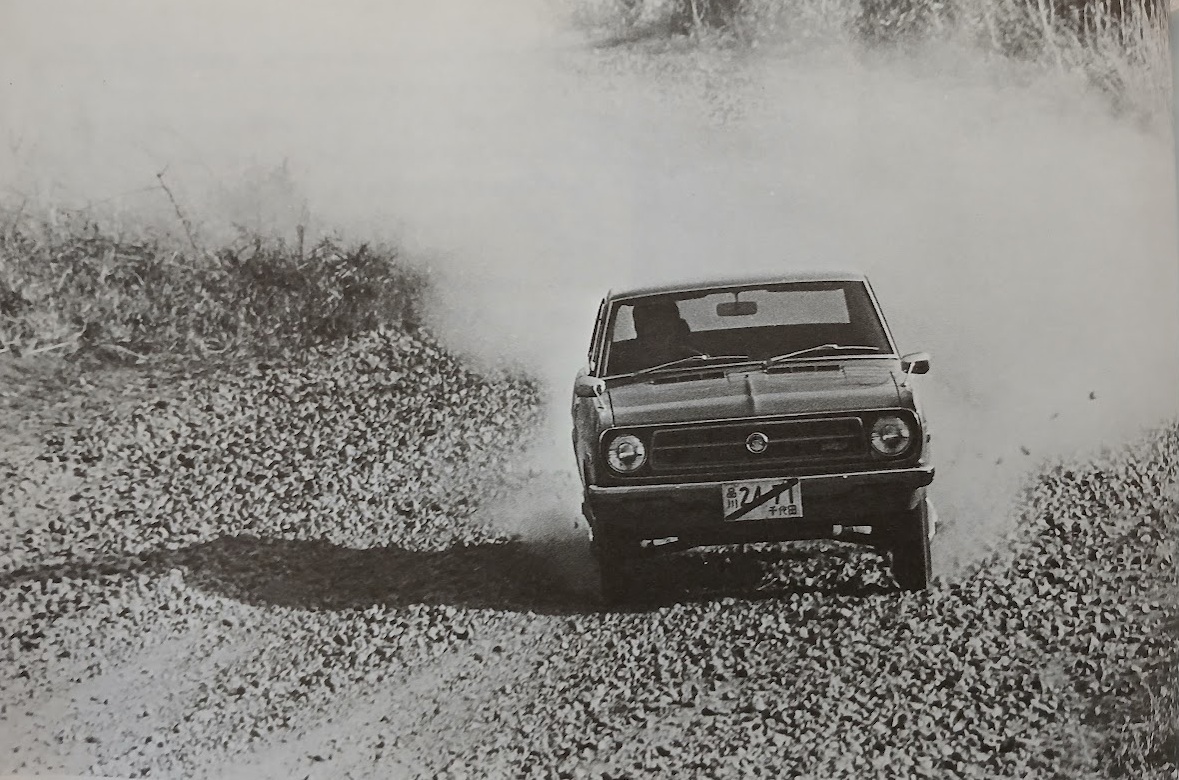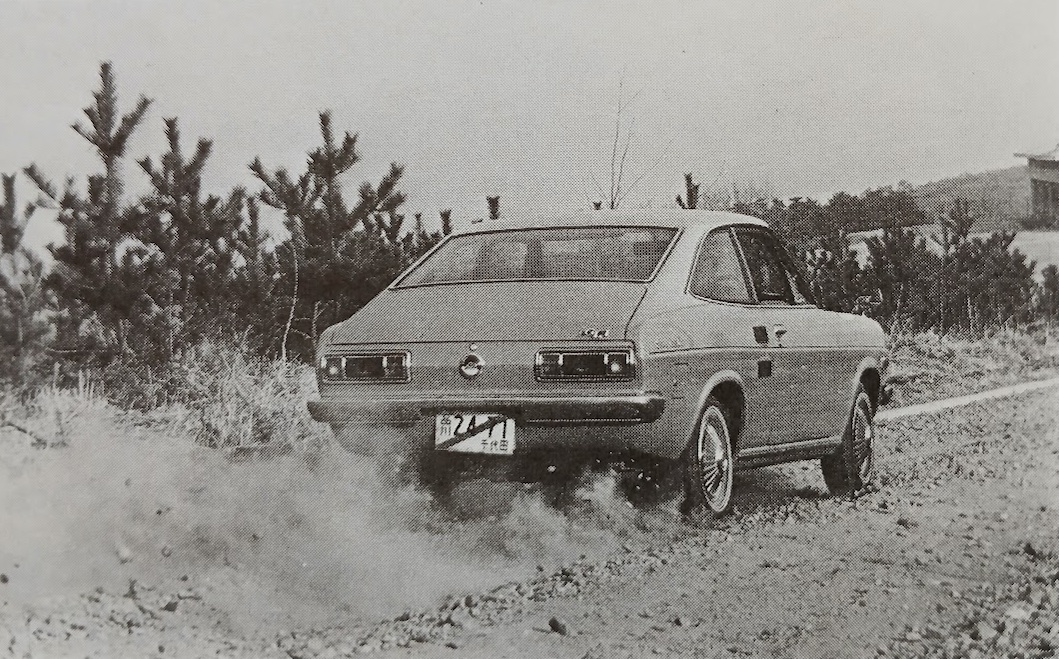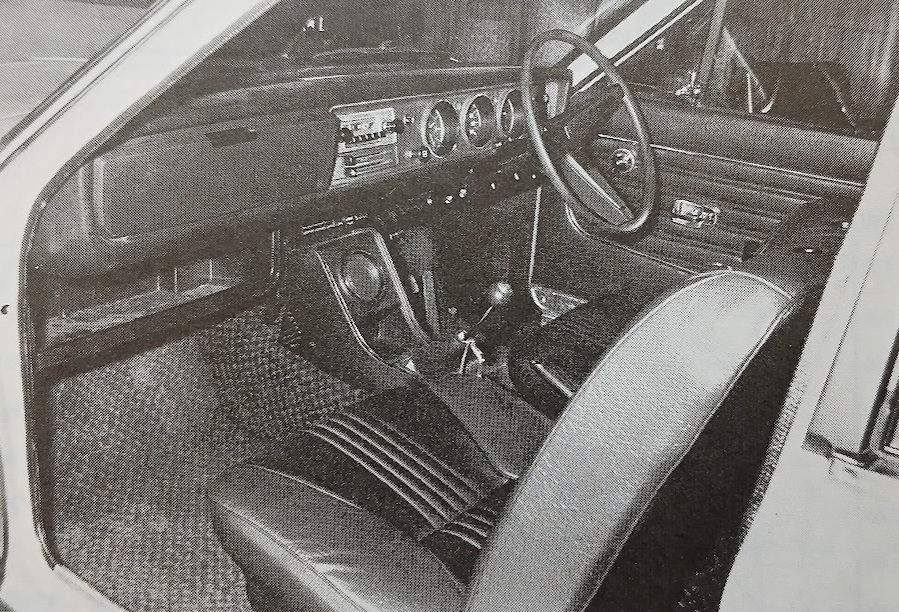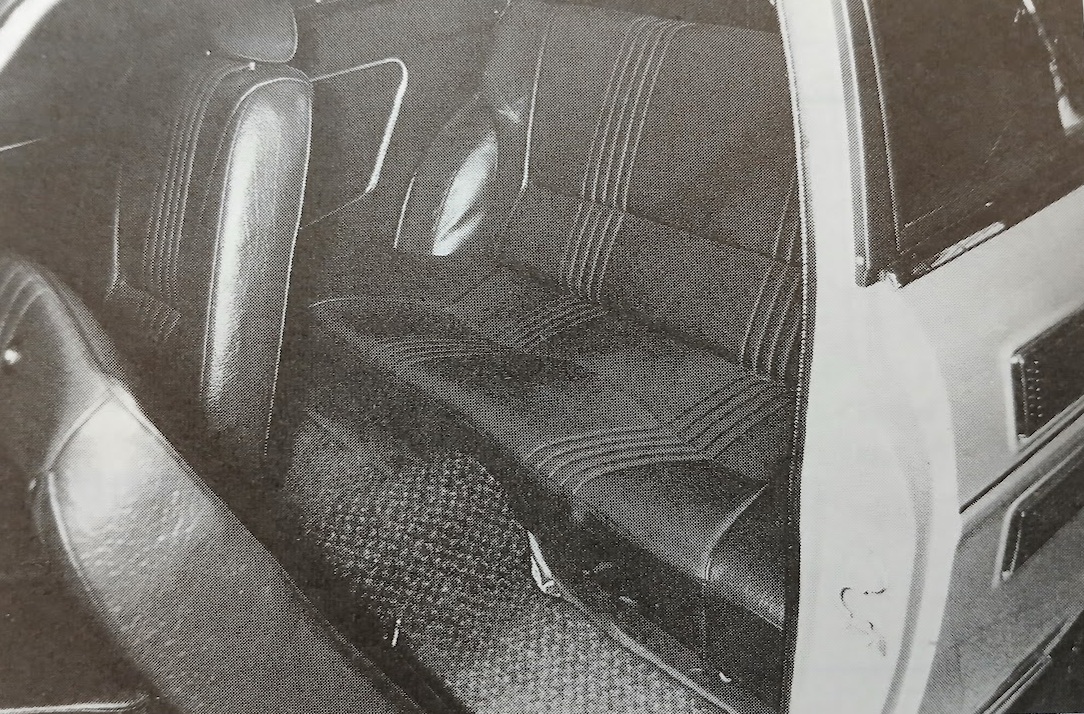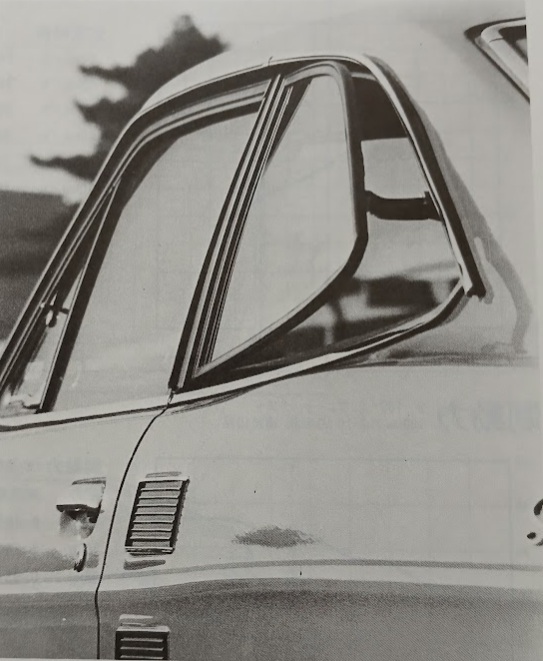Nissan Sunny Coupe 1200GL (1970)
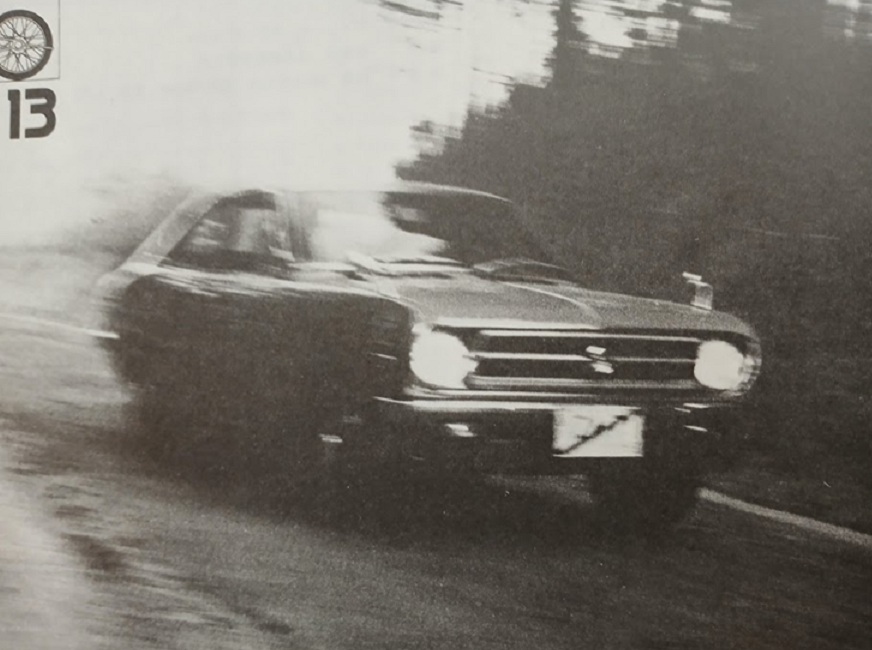
Publication: Car Graphic
Format: Road Test
Date: April 1970
Author: “C/G Test Group” (uncredited)
Summary: Better than the previous Sunny 1000 Coupe in every respect. Five-bearing engine, extremely light and smooth response across the entire range, good gearing with taller ratios, 125km/h possible in third gear, disc brakes for the first time, much improved ride on rough roads, light tail slides easily but easy to control, spacious interior, improved finish.
Road testing the Sunny Coupe 1200GL
The Sunny 1200, which was released on January 6th, is the first of Nissan’s 1970.5 models. It is a size larger than the previous Sunny 1000 (or two sizes larger, according to the manufacturer’s PR), and is equipped with a newly designed five-bearing, 1171cc, 68ps engine, with a richer interior and exterior, making it a significantly upgraded model.
Apart from the engine, the major differences from the Sunny 1000 are that the front suspension has changed from a transverse leaf spring and double wishbone type to a MacPherson strut type like the Bluebird, and that front disc brakes are finally installed (only on the top-of-the-line GL model). Right from the start, the car is available as a two or four-door sedan, a coupe, and even a van, and offers a variety of transmissions, from a 3-speed column shift, to a 4-speed floor shift, to Nissan’s full automatic (this was probably a lesson learned from the bitter experience of the Sunny 1000, which was very unpopular when it was released, when it was only available as a two-door sedan with a 3-speed column shift).
The model we tested this time is the Coupe GL (590,000 yen) with a 4-speed floor shift. The difference between the coupe and the sedan is only in the body itself, and the mechanicals are completely the same. In the previous Sunny, the engine tuning was different between the sedan (56ps) and the coupe (60ps), but in the new Sunny, both have the same output at 68ps/6000rpm. Weight has increased by 25kg to 700kg (the manufacturer’s published value), but the increase in power is even greater, with the power-to-weight ratio improving from 11.3kg/ps in the 1000 Coupe to 10.3kg/ps in the 1200 Coupe.
In short, the new 1200 is a major improvement over the old 1000 in almost every respect. One of the most important improvements is, of course, the engine. Its capacity is now 1171cc (still oversquare, with a bore and stroke of 73mm x 70mm), with a stroke increase of 11m over the previous 988cc unit, and the crankshaft is now a five-bearing type. As mentioned, power is 68ps/6000rpm, and torque is 9.7kgm/3600rpm.
The Sunny 1000’s engine was well known for being very light and revving up to high revolutions easily, despite being a completely ordinary OHV unit, and this feeling is even stronger in the new 1200. We kept to a rev limit of 6500rpm as dictated by common sense (it is strange that the Coupe GL, which is fully equipped with accessories, does not come with a rev counter; we installed an electronic rev counter for the test), but during acceleration tests, the engine over-revved easily in first and second gears. The valve gear has a very light, low-inertia feeling, and response is exceptionally good for an OHV engine, with no sign of valve bounce even at 7000rpm. The balancing is very good throughout the entire rev range, and it’s hard to believe that it’s only an OHV four-cylinder. It is with no disrespect that we call this 1200cc unit is a standout among Nissan’s generally rough-feeling engines.
The engine noise level is also much lower than that of the Sunny 1000. This is no doubt due in part to the increased rigidity of the crank due to the five bearings, but another factor is that the cooling fan has been changed from steel plate, which is prone to resonance, to a synthetic resin. In any case, it is an engine that can be revved up without any psychological stress.
The reason why the 1000 was generally considered to be a noisy car is because the gearing is short, keeping the revs high. However, the 1200’s increased torque makes it easier to pull taller gearing. To be specific, the speed per 1000rpm in top gear has significantly increased from 22.8km/h for the 1000 to 26.4km/h in the 1200 (normally, the standard for 1200cc class cars is 23-24km/h, and Japanese cars in particular are generally lower in order to emphasize acceleration at low speeds). This gear ratio setting was found to be just right for the Sunny’s weight and power output in our tests.
The catalog top speed of the Sunny 1200 (both sedan and coupe) is listed as 150km/h (the 1000 coupe was 140km/h), and the test car recorded a consistent 148.8km/h on the 1km straight section at Yatabe, and a lap average of 147.8km/h for the 5.5km circuit, which is excellent performance for a 1.2-liter OHV engine. The gear setting is close to ideal for a practical car, and it is very easy to reach top speed, reaching 137km/h (in about 35 seconds) at the 1km mark from a standing start, and then reaching top speed in about another 30 seconds. The speedometer in our test car was very lenient, with the needle far off the 160km/h scale when actual speed was 148km/h.
The gearbox is another big attraction of the Sunny. The synchromesh is absolutely unbeatable, and the shift throws are short and precise. Due to the free-revving engine and the high gearing, first, second and third gears extend to 45, 80, and 125km/h at 6500rpm, which is the practical maximum, and the absolute rev limit is about 10% higher than that. There is almost no gear noise, but the gear lever vibrates a little when the revs exceed 5000rpm. The clutch has a moderate stroke and engages smoothly, but the pedal on the test car required a lot of pressure and made an abnormal creaking noise, probably due to friction in the operating cable.
Acceleration performance is also at the top of the class for a 1200cc practical car. 0-400m was recorded in 18.5 seconds with a load equivalent to three passengers (17.9 seconds with two passengers, according to the catalog). The power characteristics are of the favorable “flat torque” type, and linear acceleration is produced at almost any rpm range, in any gear. Even in top gear, if you step on the gas gently from 30km/h, you can accelerate smoothly without knocking. Despite the compression ratio of 9.0, regular gasoline is sufficient.
The power at high speeds is absolutely superior to the old Sunny 1000. For example, full-throttle acceleration from 80, 100, or 120km/h in top gear is in a different league from the 1000, and on the highway, you can overtake and climb hills without downshifting. The overall noise level is significantly lower than the 1000, and when driving at around 60-80km/h, the engine is so quiet that you wouldn’t think it was only a 1200cc. However, it is unfortunate that there is a loud exhaust resonance in the mid-range, around 4000rpm, which corresponds almost exactly to 100km/h in top gear (about 3800rpm) which is where the car will spend most of its time on the highway.
Due to its tall gearing characteristics, the Sunny naturally lends itself to high cruising speeds, and if the law allows, it is possible to maintain a cruising speed of 120-130km/h for extended periods. Wind noise from the body is exceptionally low, but noise from the road is quite loud. One of the reasons for this is that the coupe does not have a bulkhead (which would be an effective soundproofing wall) between the trunk and the passenger compartment, allowing the trunk to be accessed by folding down the rear seatbacks.
Even on early mornings when the temperature was below freezing, the engine always started immediately when we pulled the (manual) choke. Even when we released the choke almost immediately, it idled smoothly at 800rpm, and once we drove off, it accelerated immediately without hesitation.
Because of this, we were a little worried that the mixture might be on the rich side, but judging from the very good fuel economy, this doesn’t seem to be the case. The overall average over 512km, including about 200km of constant-speed testing at Yatabe, was 11.5km/l, and even in stop-and-go driving in urban areas, it is unlikely to fall below 10km/l. It is especially economical when cruising on the highway, where it is almost certain to achieve more than 13km/l, so if you fill up the 38-liter tank with regular gasoline, you can travel nearly 500km without refueling. For a car like the Sunny Coupe, which is primarily aimed at young owners (who inevitably have light pockets), this fuel economy will be seen as a great advantage.
The biggest improvement in the Sunny’s chassis is undoubtedly the inclusion of disc brakes (Arnett type, made by Girling Tokico) for the first time. The all-drum brakes on the previous Sunny 1000 were completely inadequate for the car’s dynamic performance. When we tested that car, even a speed of just 80km/h, the brakes didn’t seem to work at all when we first stepped on them. The 1200’s disc brakes don’t have a servo, so they require a relatively large amount of force given the weight of the car (32kg of pedal force to obtain 0.95 of braking force), but they are incredibly powerful compared to the previous drum brakes, so they can be used safely at high speeds. In the 0-100-0 fade test, the initial pedal force of 21kg increased to 33kg by the sixth stop, and there was a burning smell, but the brakes remained stable until the last (tenth) stop, so it can be said that the brakes have reasonable fade resistance. The handbrake on the floor is exceptionally powerful, providing 0.3g of braking force from 50km/h.
The steering is always extremely light, and accurate enough that there are no problems in everyday use. It takes three turns from lock to lock, while allowing about 5cm of free play at the rim. The minimum turning radius is 4.1m, making it extremely maneuverable. In fact, there is probably no other car that is easier to turn in a tight space than the Sunny. On good roads, the straight-line stability is excellent, so much so that we could take our hands off the wheel at top speed (there was almost no wind on the test day), but on uneven roads, such as undulating paved roads, the straight-line stability is easily disturbed due to bump steer.
The handling is not much different from the previous Sunny 1000, meaning it is average. The Sunny 1000 rolled to relatively large angles when cornering, and the inside rear wheel spun easily, which tended to induce tail slide. The new 1200, unfortunately, inherits this same characteristic. Adhesion at the rear is low, so if you power around a tight corner in second gear, the inside wheel spins easily, and if you try to accelerate in second gear on a gravel road, both wheels spin and it loses directional stability. In short, the tail feels very light. However, the tail slide starts gradually and is predictable, so Sunny drivers will instinctively learn to catch it with quick steering corrections. The Yokohama 6.00-12 tires on the test car had poor grip even on dry concrete and slid quite easily. The wheel rims have been widened from 3.5J to 4J.
Another major improvement in the 1200 is the ride comfort. It has become softer in general, and the improvement is particularly noticeable on rough roads. There are no more direct shocks like in the previous model, and even though it is a light car, there is a certain sense of weight to it. The improved ride quality is also due in part to the greatly improved interior comfort. As the manufacturer says, the body has become “two sizes larger,” and this is best felt in the increased interior width. Previously, the Sunny’s interior was notorious for being cheap-looking and poorly finished, but the 1200 has also made great improvements in this regard. First of all, the seats in the GL are well finished. with soft tricot fabric in the center of the cushions, and they are generously sized, with good lateral support. The driving position is generally good, although some people have suggested that the seats be a little lower. The rear seats are more spacious than those of a typical coupe, but when the front seats are slid all the way back (as any driver over 175cm tall will do), the rear passenger’s knees touch the front seatbacks, and the headroom is very limited. However, if the front seats are moved forward one notch, the rear passenger can sit comfortably for long periods. The cushion in the center of the rear seats is thin due to the driveshaft tunnel, and it is impossible to bear sitting there for long.
The GL model is well equipped with accessories, and the new powerful ventilation system is extremely effective (there was no means of ventilation other than opening the windows in the previous 1000). This can also be used in conjunction with the heater, so in winter you can create the ideal condition of warming your feet and cooling your face with fresh air.
A traditional feature of the Sunny Coupe is that the rear seat backrest can be folded forward to connect the rear cabin with the luggage compartment, creating a spacious, flat load floor. It is certainly convenient to be able to load and unload long objects, such as skis or guitars, which seem to be inseparable from young people these days, from the rear of the car. However, this is only possible for thin objects. The opening of the Sunny Coupe’s trunk lid is extremely short, and bulky items cannot be loaded through it. For example, 43 x 41 x 37cm square box that the C/G test group always uses to store our test equipment does not fit, and the front seat backrest does not fold forward far enough to load it easily through the doors. Another drawback to this arrangement is that since there is no proper trunk, the luggage inside the car is visible from the outside, which can be worrying, and it is difficult to find a place to put cargo that may soil the interior. Also, dust is easily drawn in through the rear quarter window, so luggage is more likely to get dirty than in an enclosed trunk. Therefore, it would be more practical all around to have a partition between the passenger compartment and a separate trunk, even if it is a small one.
Owners of the outgoing Sunny 1000 Coupe will find the new 1200 Coupe GL to be a great improvement in almost every respect. With excellent economy and a low price of 590,000 yen, the Sunny 1200 Coupe GL is sure to become the first choice for many young people looking for a sporty coupe.
Postscript: Story Photos
